Last updated on December 29, 2023
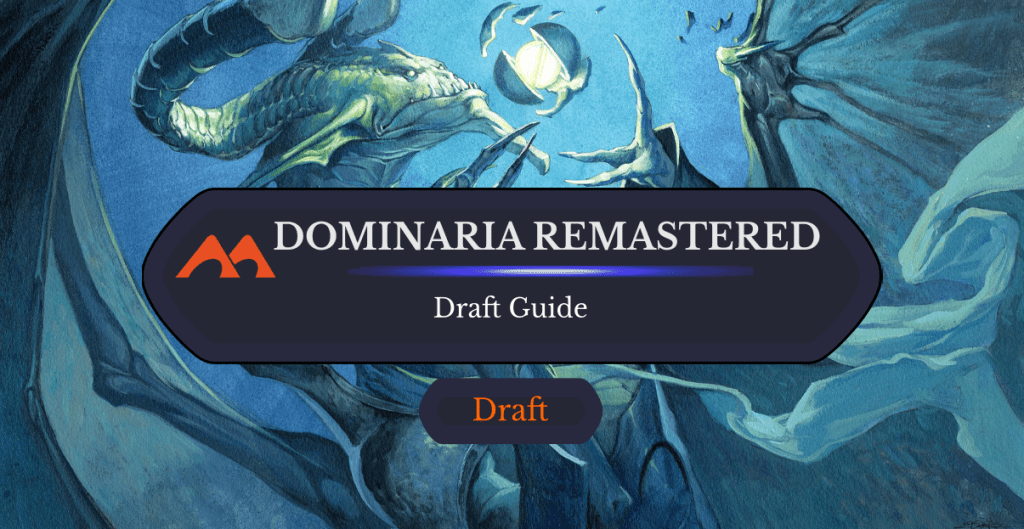
Deep Analysis | Illustration by Jesper Ejsing
Dominaria Remastered is the second paper remastered release after last year’s Time Spiral Remastered. I think of it as a remastered set in name only because it dramatically bucks the established formula for remastered sets. While TSR and each of the digital remasters before it were fusions of two or three sets, Dominaria Remastered incorporates cards from a whopping 27(!) different sets.
The end product feels a bit unfocused, though the developers did aim to include the usual 10 2-color archetypes and lots of synergies. Expect to play with tons of cards you’ve played with before, sometimes in familiar ways and other times in new ones.
Today I’m covering the set’s archetypes, bomb rares, top commons, and providing a general overview of the format. Let’s get started!
Format Overview

Mind Stone | Illustration by Adam Rex
To be blunt, Dominaria Remastered is an awkwardly balanced set with inconsistent archetypes, some powerful synergies, lots of weak rares, and color imbalances. Blue seems overpowered since it has plenty of commons that are well above the average power level in this set.
The archetype balance is also suspicious. Several 2-color archetypes lack enough redundant commons to consistently pull off implied gameplans. While there’s extra redundancy to be found in other colors (i.e., white has cycling cards for Invigorating Boon and Lightning Rift, black has good ETB creatures for Momentary Blink), splashing in this set is hard.
Splashing
There’s less mana fixing in Dominaria Remastered than any set I’ve seen in years.
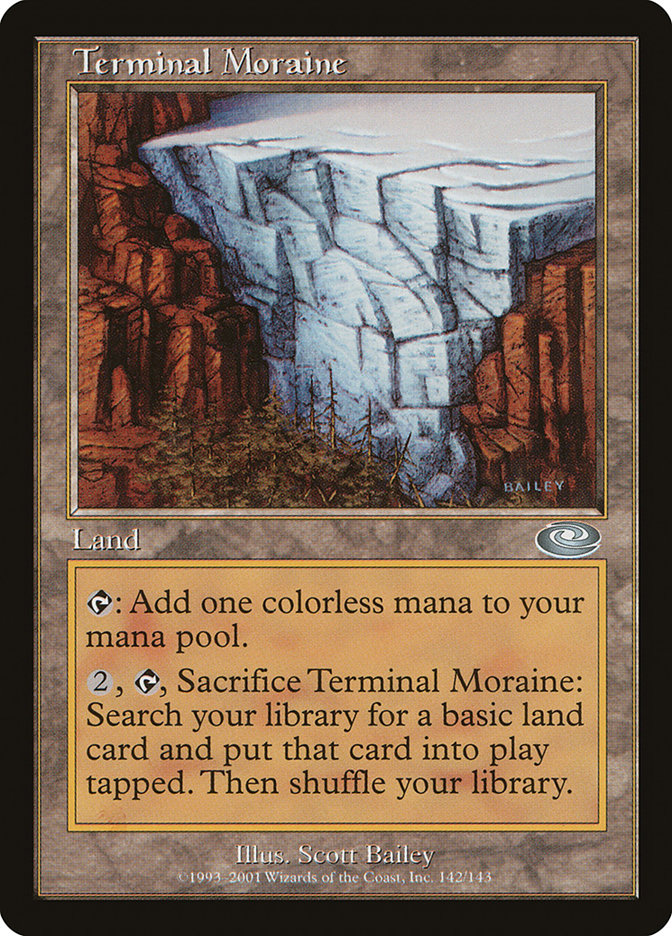
Terminal Moraine is a Warped Landscape predecessor that won’t slow you down until you need to grab your third color, but doing so is clunky. I rate this a bit lower than your average Evolving Wilds, but it’s still the only common way to splash for most decks.
It’s also worth noting that Terminal Moraine is bad in multiples, but it’s unlikely to slow you down much with just a single copy.
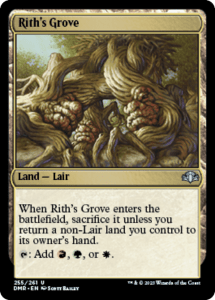

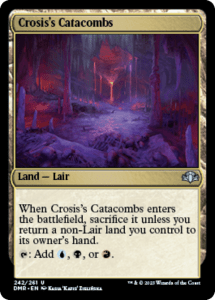

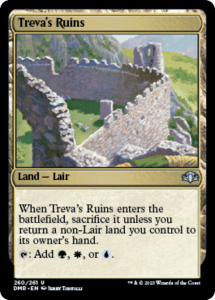
There are five uncommon Lairs in this set, which are an ancient cycle of shard-colored lands not seen since Planeshift. These function a bit like bounce lands but don’t enter tapped or tap for two lands worth of mana.
While they won’t slow you down the turn you play them, you will be playing at -1 mana for every turn afterwards (until you run out of land drops). I don’t think the Lairs are particularly good.You can play them if needs must, but they’re weaker than Terminal Moraine.
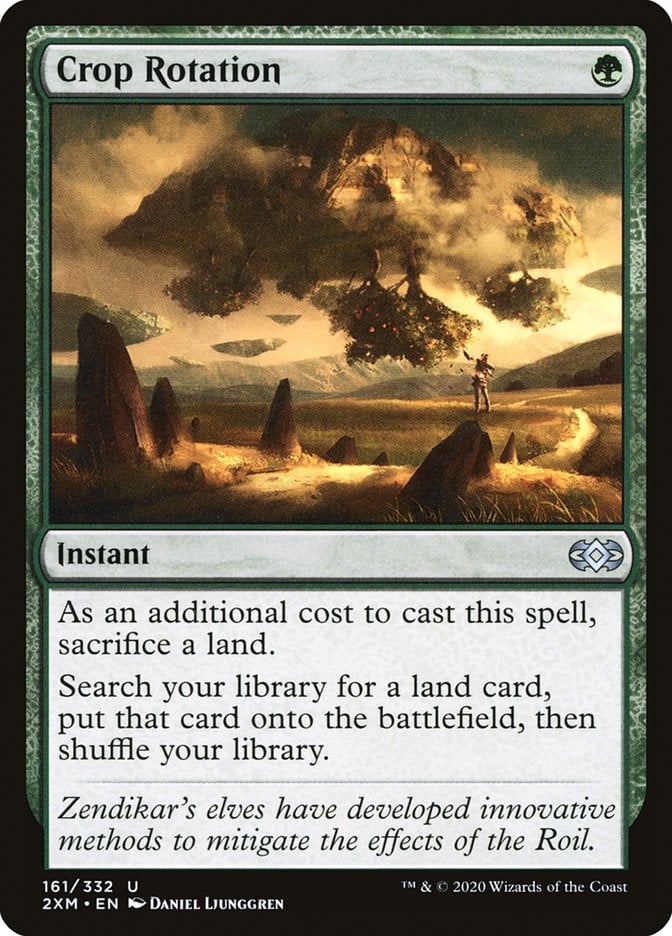
Crop Rotation is a terrible Limited card that could be used to fix your mana if you didn’t read this guide. Although I suppose you could make a case for it if it’s tutoring up Nantuko Monastery, as that does put two cards into your graveyard first…
And, stunningly enough, that’s all the non-rare mana fixing there is in the set. The set designers chose to fill the slots of all the cards that might normallylet you splash with cards like Wild Growth, Krosan Restorer, and Werebear. None of those provides any extra colors, so expect to play two colors 99% of the time.
Bad Rares
Dominaria Remastered has a fair number of rares I don’t want to open. A significant number of the rares in this set are unplayable, or fringe at best. Here’s a full list of rares that you should basically never play:
- Dark Depths
- Hunting Grounds
- Last Chance
- Legacy Weapon
- Test of Endurance
- Urza's Incubator
- Arcades Sabboth
- Cryptic Gateway
- Gamble
- Jester's Cap
On top of those, these rares are weak or worse than most commons but not completely unplayable:
- Nut Collector is a 6-mana 1/1 that embarrassingly dies to both Solar Blast and Spark Spray. While it could stick several turns and win you the game, I’d just play Elvish Aberration instead.
- Time Stretch is too expensive.
- I have no clue why anyone would put Arboria in their deck, but at least it doesn’t cost eight mana.
- Crawlspace is another weird stalling card, but I guess it does stop Empty the Warrens.
- 4-for-1s are great, but being forced to have four legal targets means Decimate won’t be castable a good chunk of the time.
- Entomb is only playable if you have some kind of Dread Return or Necrosavant gameplan.
- Exploration isn’t worth a card most of the time, though ramp– and card draw-heavy decks can try it.
- Lotus Blossom is slow one-use mana ramp/fixing, but it’s playable in decks with exceptional mana sinks.
- (1v1 isn’t EDH, so Mystic Remora is an anti-control sideboard card at best rather than some windmill slam engine.
- Umbilicus is certainly no Sulfuric Vortex. I could see this being useful when ahead, but I doubt it’s worth it.
- Urza's Blueprints is dramatically overpriced compared to modern card draw engines, but I guess it does the job if you can afford it.
- All of the rare tutors put you down a card, so I’d avoid them unless you have something game-winning to consistently search for.
Bomb Rares
On the other hand, Dominaria Remastered also has several cards that are way better than everything else.Most of these should feel like a cool drink of water in the middle of a burning Desert given how awkward and underpowered this set appears.

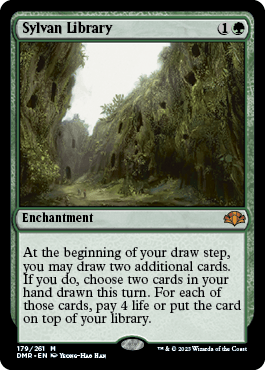
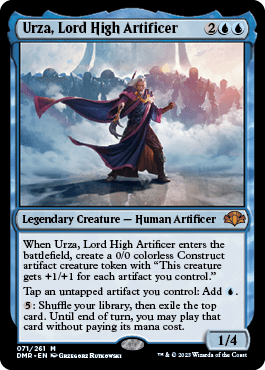
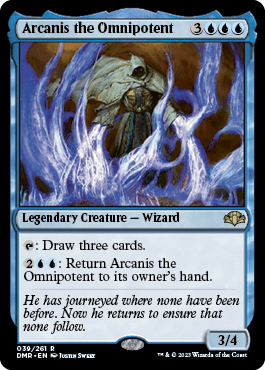
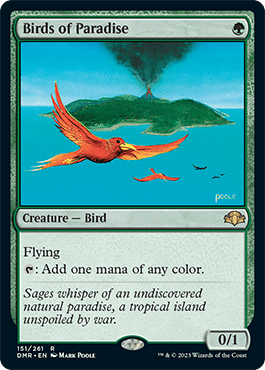
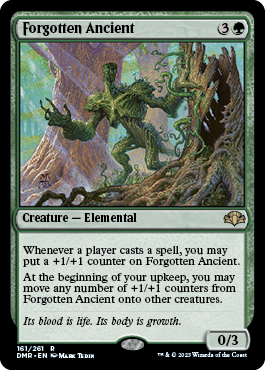
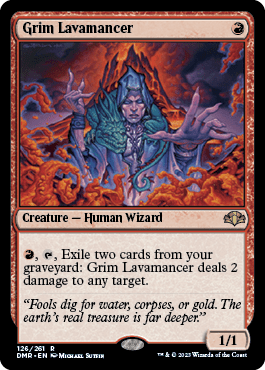
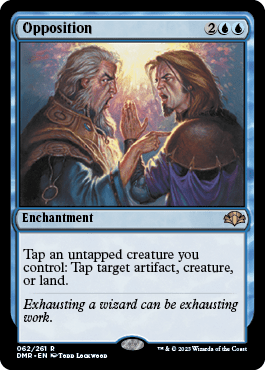
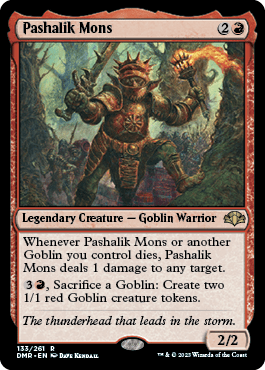
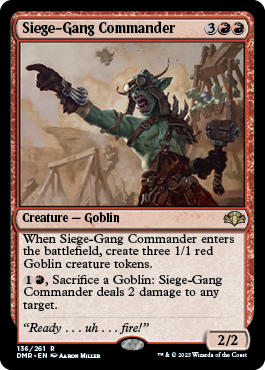
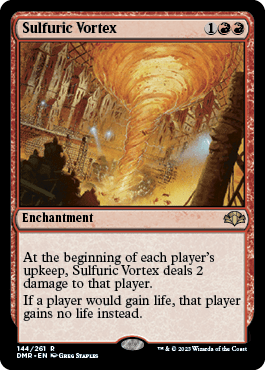

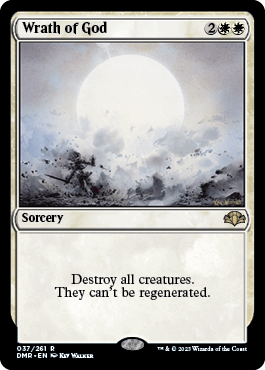
- Lyra Dawnbringer
- Sylvan Library
- Urza, Lord High Artificer
- Yawgmoth, Thran Physician
- Arcanis, the Omnipotent
- Birds of Paradise
- Forgotten Ancient
- Grim Lavamancer
- Opposition
- Pashalik Mons
- Siege-Gang Commander
- Sulfuric Vortex
- Triskelion
- Wrath of God
These are the best of the best, but there are of course other playable rares. Just don’t take any of these cards over premium uncommons like Battle Screech, Swords to Plowshares, Confiscate, Fact or Fiction, Lightning Rift, and Flametongue Kavu.
Top Commons
White
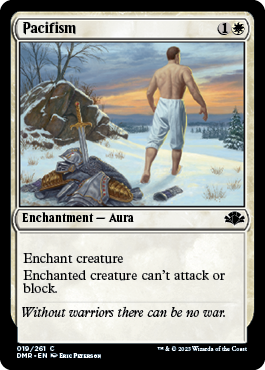
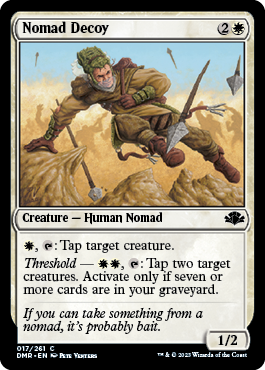

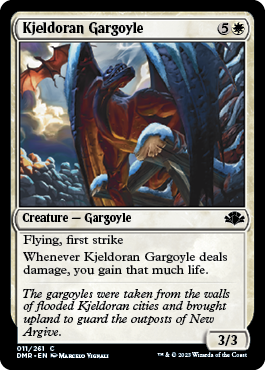
White is probably the worst color in the set with lots of junk playables and only a couple standout commons. The four cards above are pretty general use (removal, tapper, common wincon).
I expect white to do best as a support color, but white aggro might be playable with Savannah Lions at common.
Blue
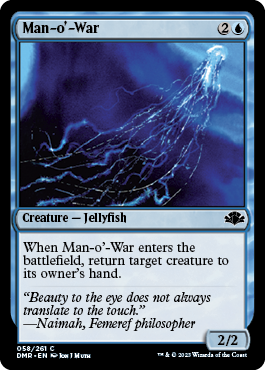

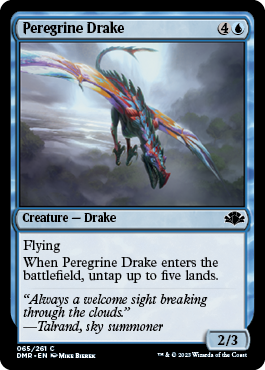
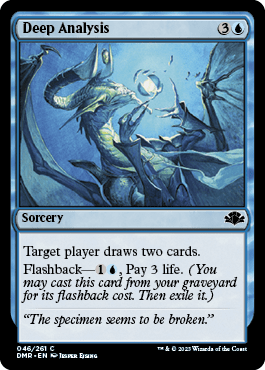
As I said above, blue is easily the best color in the set. You know blue is eating good when Snap doesn’t even make its top four commons.
Blue also has other solid general purpose playables like Aven Fisher, Impulse, and Obsessive Search. Look to blue for value, tempo, and combo synergy with Horseshoe Crab.
Black
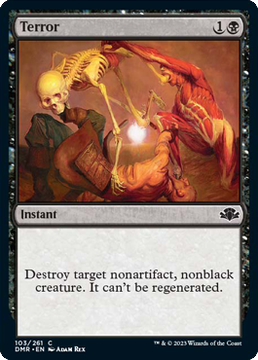
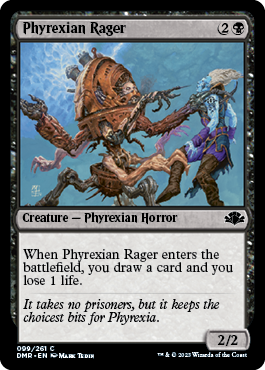
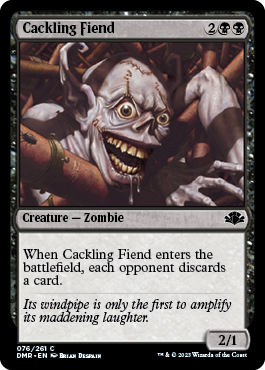
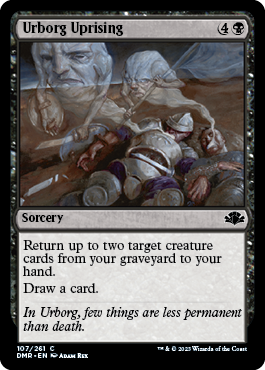
Black is a solid value color with the best common removal spell in the set. Terror’s only weakness is its lack of use against other black creatures, which makes Hyalopterous Lemure and Evil Eye of Orms-by-Gore a bit stronger than they might seem.
Beyond the top four cards, black has a lot of playable filler and a decent removal/value spell in Ichor Slick.
Red

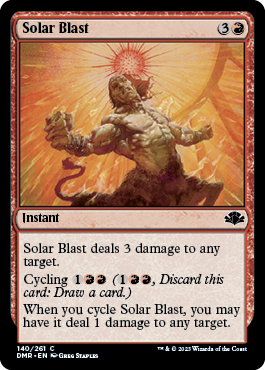
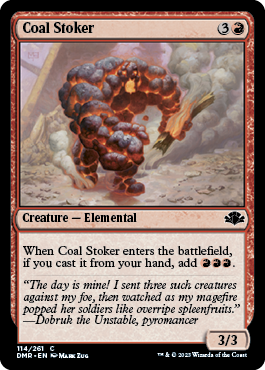

Red is a strong color that works well as either a primary color for aggro decks or support color for storm/cycling strategies. It has a nice mix of burn spells, cheap creatures, and two fatties in the form of Macetail Hystrodon and Avarax.
Both of the storm payoffs are red commons and I’ll talk about them in greater detail below.
Green
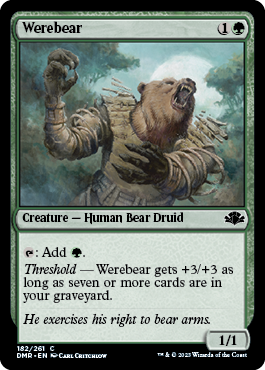
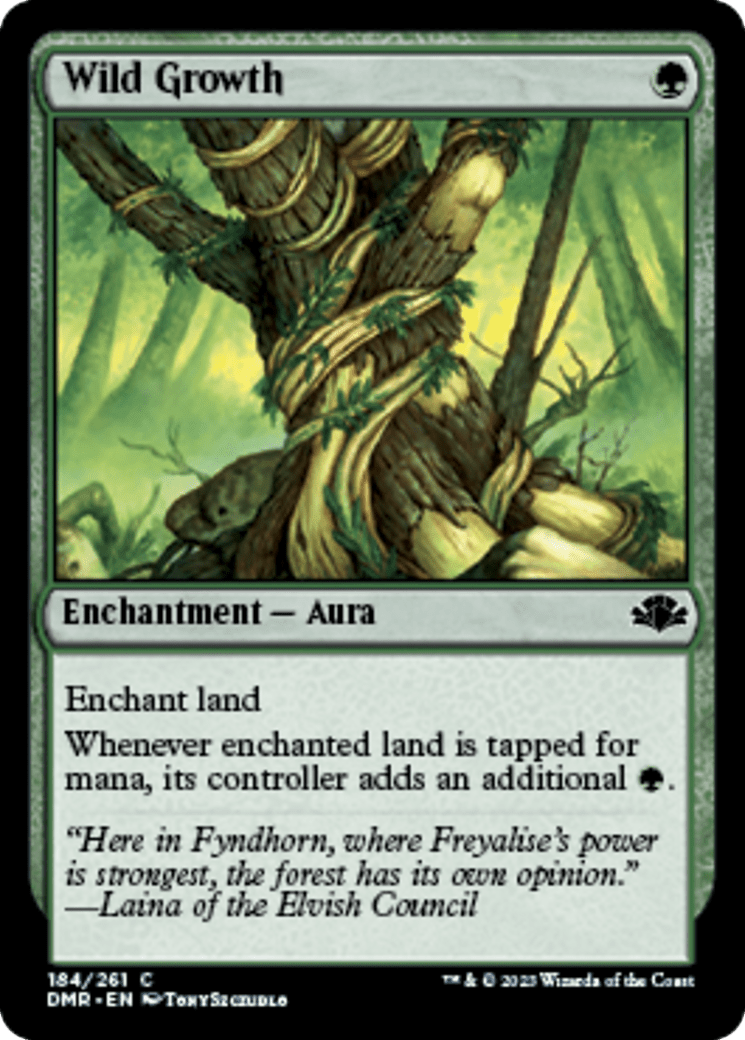


Green’s primary strength in this set is ramp. Wild Growth and Werebear are better than the usual ramp creatures we get in Limited, and Symbiotic Beast is a nice fatty to ramp into. Fa'adiyah Seer is a decent value creature with extra use for achieving threshold.
Green notably has zero removal in this set, not even the usual Rabid Bite or Pounce.
Other

Mind Stone is an excellent card for most decks since it’s fairly priced ramp that can cycle itself once you flood out.
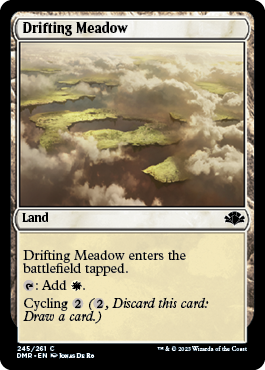
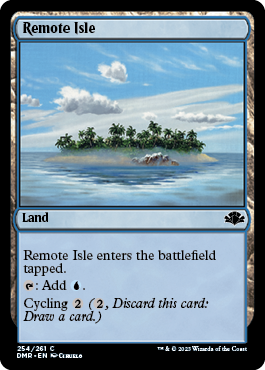

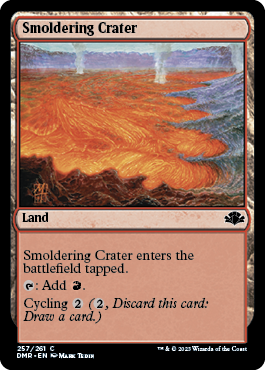
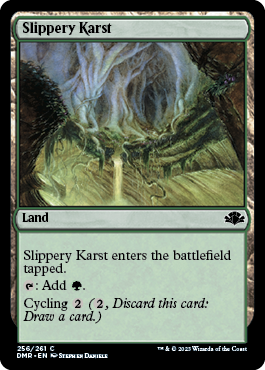
All of the common cycling lands are great, too.
Archetypes
As with most Magic sets, Dominaria Remastered features 10 signpost uncommons, one for each 2-color pair. These uncommons show off 10 different archetypes that encourage you to build your deck in specific ways. A lot of these archetypes occupy well-traveled spaces for these color pairs, like Azorius () flicker, Dimir () control, and Simic () ramp, while others are more novel.
Note that all of these archetypes are taken from MaRo’s article, which described the developer’s goals for the set. While I think most of the archetypes fall a bit flat of the vision they described, the official framework is still a good starting point for understanding the set.
Azorius Flicker
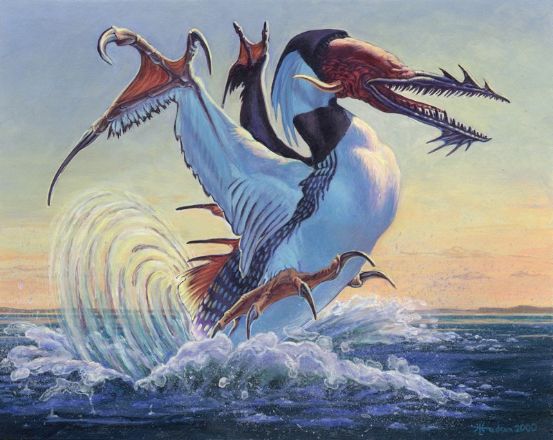
Sawtooth Loon | Illustration by Heather Hudson
Sawtooth Loon showcases Azorius’ theme of flickering/replaying creatures for value. This is a common theme in general for Azorius that’s been done many times before (Cloudblazer, Elite Guardmage, etc.) It usually plays out as a midrange/control strategy that wants to grind out value with synergies. Striking a balance between ETB value creatures, flicker effects, and interaction is important for success.
But Azorius flicker isn’t at its best in this set. While the flicker effects in this set are good (Momentary Blink and Whitemane Lion at common), the selection of value creatures is poor. Your options are basically just Cleric of the Forward Order, Man-o'-War, Peregrine Drake, and cards from other colors like Phyrexian Rager and Flametongue Kavu.
Dimir Control
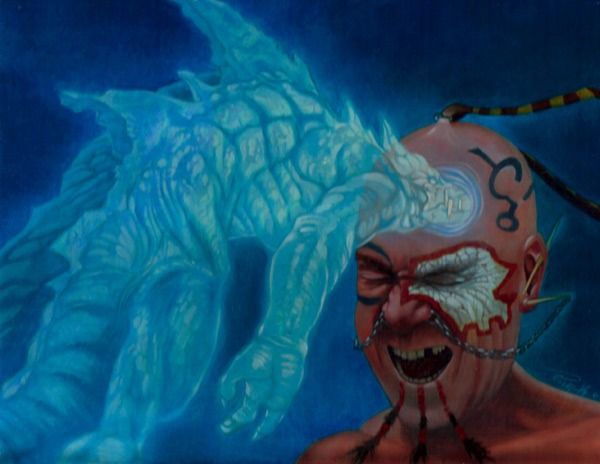
Recoil | Illustration by Alan Pollack
Recoil is a great piece of interaction that goes well in any Dimir deck. Its general usefulness also gels fine with Dimir as an archetype, which is best described as a control/good stuff deck. You know the drill by now: draw cards, kill things, draw some more cards, kill some more things, and win with whatever’s left.
For card advantage I recommend Cackling Fiend, Phyrexian Rager, Urborg Uprising, and Deep Analysis. The best common removal spells are Man-o'-War, Ichor Slick, and Terror. Nightscape Familiar should also do well as a blocker/cost reducer for blue.
One thing worth noting about Dimir is that there’s a small madness theme in this set. There are two commons and uncommons with madness, all of which can fit a Dimir control deck. Cards like Aquamoeba, Urborg Syphon-Mage, and Undead Gladiator are decent enablers if you want to try a madness subtheme.
Rakdos Zombie/Goblin Tribal

Dralnu's Crusade | Illustration by Arnie Swekel
Rakdos () has done goblin tribal several times now and is having another go at it in Dominaria Remastered. Goblin Matron is an impressive card to see at common, and you’ve also got goblin staples like Mogg War Marshal, Skirk Prospector, and Gempalm Incinerator to play with.
One of the most appealing things about this archetype is that it has two busted rares (Pashalik Mons and Siege-Gang Commander), both of which can be tutored up with Goblin Matron.
This archetype’s signpost card, Dralnu's Crusade, is a nice anthem effect. But the zombie bonus of the card is extremely narrow and has no real purpose other than enabling Deadapult. It’s a powerful pairing, but keep in mind that Deadapult will do nothing on its own without zombies.
If you need some non-goblin creatures to fill out your deck, try to draft zombies like Cackling Fiend, Phyrexian Ghoul, and Pyre Zombie.
Gruul Cycling
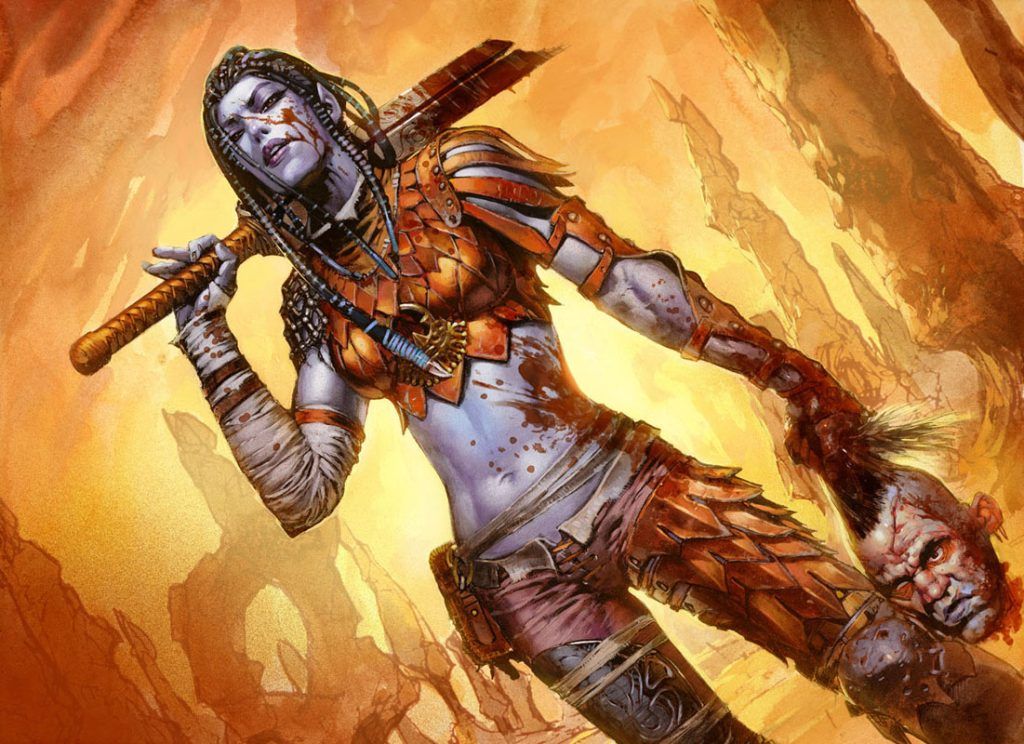
Radha, Heir to Keld | Illustration by Jim Murray
Gruul () cycling is another soft archetype since it has a grand total of two direct payoffs (Invigorating Boon and Lightning Rift) and a solid signpost uncommon that has nothing to do with cycling (Radha, Heir to Keld). Your goal with Gruul should be to build an aggro leaning midrange deck with a good curve, some interaction, and a bit of cycling synergy.
There are no bad cards with cycling in this set thanks to the mechanic’s inherent flexibility. Solar Blast is a great common for this archetype that can pick off X/1s while cycling, and it also works as a 4-mana Lightning Strike if needed. It’s also worth noting that off-color cards may be playable just for cycling, similar to how they were in Ikoria.
Street Wraith is particularly appealing as a free way to get Lightning Rift triggers. I’d also try to highly prioritize Smoldering Crater and Slippery Karst if you can because they let you get away with playing more lands than you might otherwise.
Speaking of lands, the more cycling cards you add the greedier you can get with the number of lands. This is especially true with Elvish Aberration, which always grabs a Forest. I wouldn’t drop to Ikoria levels of lands (12 to 13), but 15 to 16 lands should be common in Gruul.
Don’t forget that both Invigorating Boon and Lightning Rift say “whenever a player cycles a card” rather than “whenever you cycle a card.” Your opponents might just end up giving you random value if you’re paying attention!
Selesnya Threshold
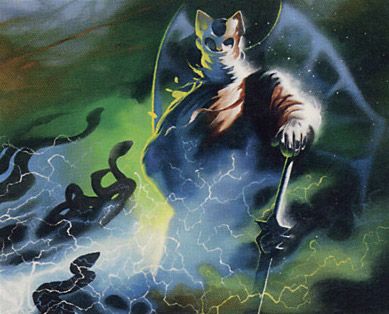
Mystic Enforcer | Illustration by Gary Ruddell
Mystic Enforcer headlines an archetype Selesnya () hasn’t seen since the days of, well, Mystic Enforcer itself. Your goal with Selesnya threshold is to fill up your graveyard to buff creatures like Mystic Zealot and Werebear.
There are several commons in this threshold, most of which remarkably improve once you’ve binned seven cards. So the question is, how do you achieve threshold in a timely manner?
This set is unfortunately lacking in hefty self-mill like we saw in The Brother’s War, so your options for filling the ‘yard are:
- Anything with cycling
- Instants and sorceries
- Trading creatures off the old-fashioned way
- Fa'adiyah Seer
- Gamekeeper
- Millikin
Fa'adiyah Seer is a clear staple in Selesnya as a common value creature that draws cards or builds up threshold every turn. But there isn’t enough redundancy to go all-in on the mechanic. You should still try to enable threshold, but make it a subtheme of your Selesnya deck rather than its raison d'être.
Orzhov Lifegain/Loss
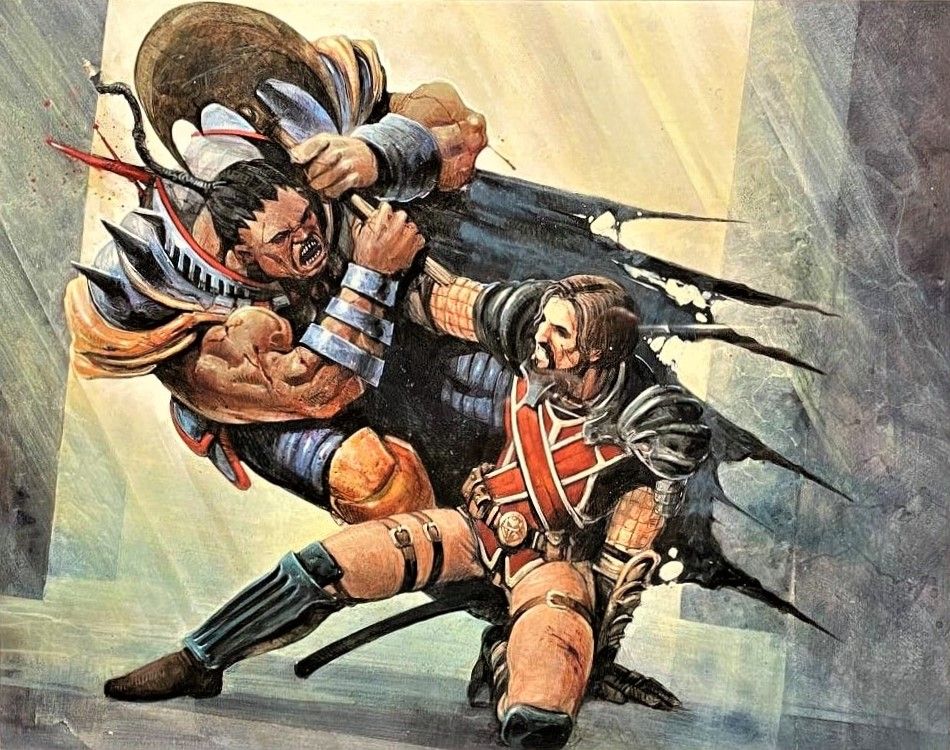
Gerrard's Verdict | Illustration by Carl Critchlow
Gerrard's Verdict is a great value spell that shows off Orzhov ()’s theme in this set, which is… uh… “bleeding your opponent out,” as described by MaRo. Cards that gain life like Cleric of the Forward Order and Kjeldoran Gargoyle can offset life costing cards like Phyrexian Scuta and Phyrexian Rager.
There isn’t really much that screams “build around me” beyond that minor synergy. Try to focus on 2-for-1s, removal, and winning games with larger common creatures.
Izzet Storm
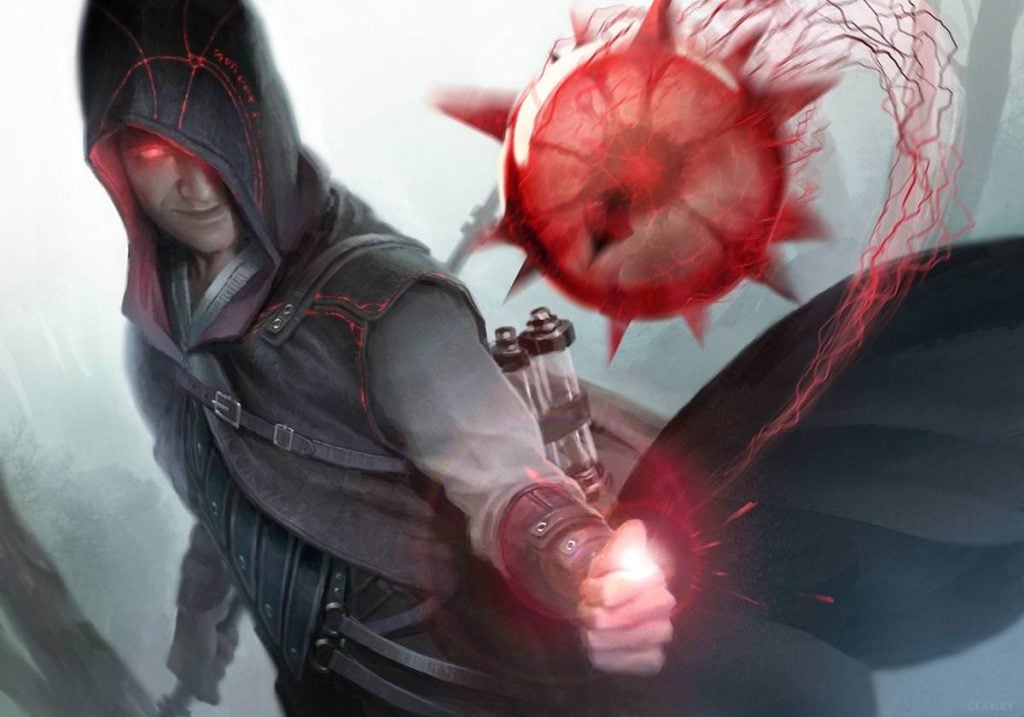
Grapeshot | Illustration by Clint Cearley
Izzet () storm is a neat archetype with a deceptive amount of support in this set. While there are only two cards with the storm mechanic, both Empty the Warrens and Grapeshot are powerful enough to build around. Them appearing at common rarity is also a huge help!
As with any storm deck, your goal is to cast as many spells in one turn as possible and then play a storm card. There are several tools that you can use to accomplish this goal:
- Cloud of Faeries, Frantic Search, Peregrine Drake, Snap, and Coal Stoker refund the mana you put into them. Frantic Search is especially good here.
- Cantrips like Impulse and Obsessive Search let you stay up on cards while still building storm.
- Raw card draw spells like Deep Analysis and Fact or Fiction are important to hit a critical mass of resources.
- Helm of Awakening is certainly risky, but a dedicated storm deck might be able to go off with it.
- High Tide could also be powerful in a storm deck, but you’ll need to balance having enough Islands for it and enough Mountains to cast wincons.
A successful storm deck wants a mix of card draw, cheap interaction, cantrips, free spells, and several copies of Grapeshot and Empty the Warrens. You also might want to trim on lands for cantrips, or play Remote Isle and Smoldering Crater to mitigate flooding risks.
Izzet Crab
One thing you might have noticed is I haven’t yet mentioned Izzet’s signpost uncommon, Quicksilver Dagger. That’s because it does little for a dedicated storm deck, instead playing best with Horseshoe Crab.
Horseshoe Crab is a self-contained archetype that goes well with Quicksilver Dagger, Hermetic Study, and Leaden Fists. You can repeatedly use Dagger or Study for value/damage for a single blue mana. Leaden Fists is a passable removal spell on its own that makes Horseshoe Crab into a big pseudo-vigilant creature.
You can incorporate Horseshoe Crab and support into any blue deck!
Golgari Midrange
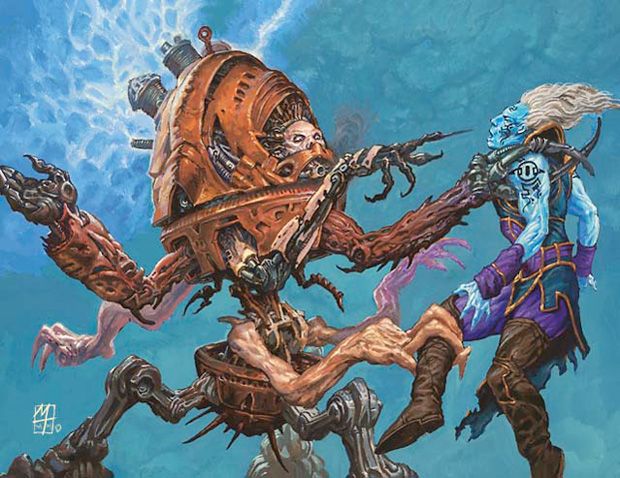
Phyrexian Rager | Illustration by Mark Tedin
While I’ve ragged on a lot of archetypes so far for not being all that synergistic, Golgari () takes that to the next level. Pick up 2-for-1s with Phyrexian Rager, kill things with Terror, and eventually win with good stuff like Spiritmonger and Call of the Herd.
It’s peanut butter and jelly Magic gameplay with nothing fancy required! My only specific recommendation is to try to build a bit bigger if possible, because solid ramp options like Nature's Lore and Mind Stone make fielding large creatures realistic.
Boros Auras
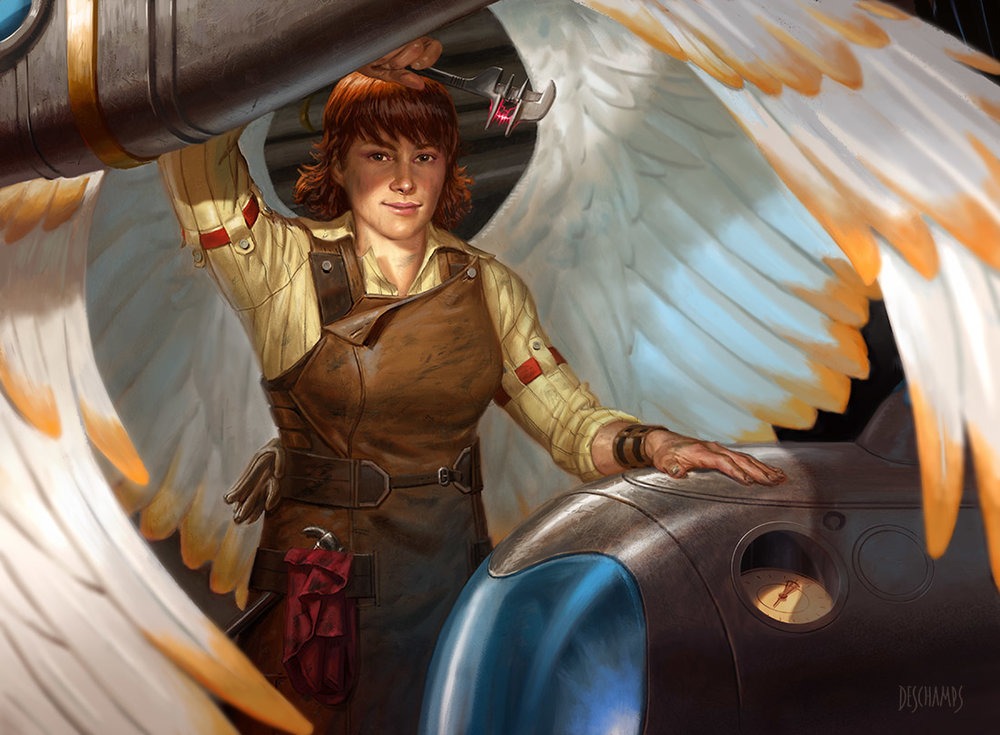
Tiana, Ship's Caretaker | Illustration by Eric Deschamps
Tiana, Ship's Caretaker is a decent card, but Boros () doesn’t seem particularly good in this set. The obvious payoffs for stacking auras are limited to just Tiana, Ship's Caretaker, Valduk, Keeper of the Flame, and Ridgetop Raptor. The set’s selection of auras is also weak besides Griffin Guide, and there is zero equipment in this set, which weakens Valduk and Tiana.
If you must play Boros I’d recommend just playing it like a normal aggro deck. Cheap aggressive creatures, Chain Lightning, pump spells, etc. I see it as more of a fallback than something I actively want to do in this set, but that’s pretty much how I always see Boros.
Simic Ramp
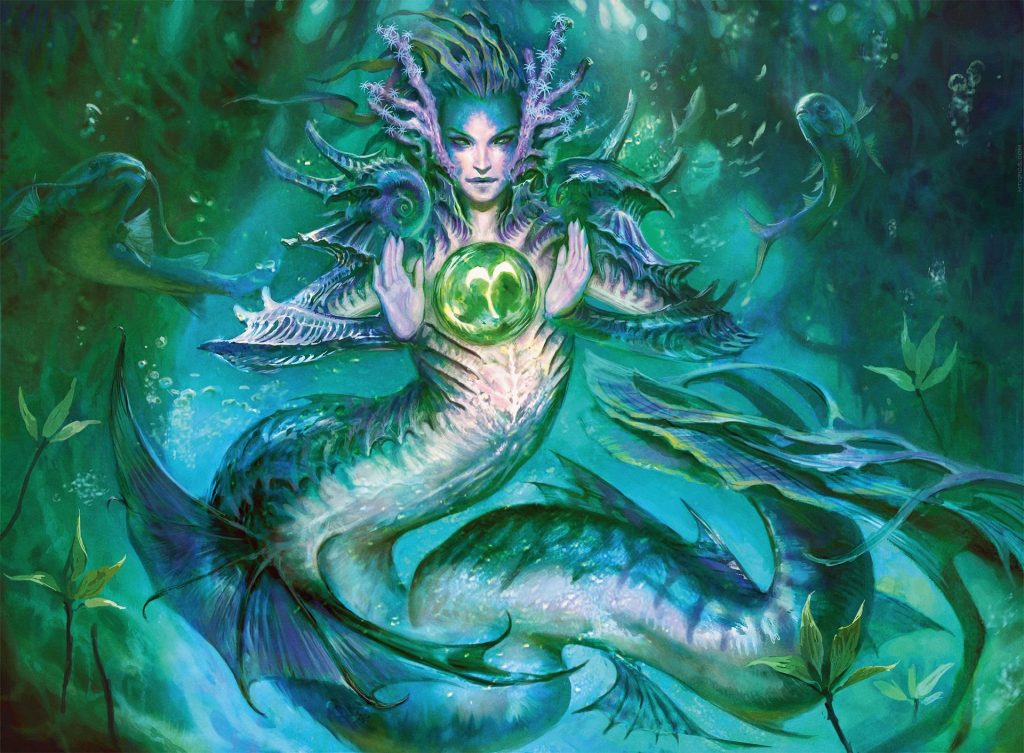
Tatyova, Benthic Druid | Illustration by Mathias Kollros
Our final archetype is another familiar one, and it easily has the best signpost uncommon in the set (Tatyova, Benthic Druid). Tatyova benefits immensely from the high-quality ramp this set has.
Your plan with Simic should be pretty straightforward:
- Ramp.
- Play some big creatures.
- Draw some cards with Deep Analysis.
- Win eventually.
Simic’s main flaw is lackluster interaction, so you’ll probably end up leaning on cards like Man-o'-War, Ovinize, Snap, and Leaden Fists to deal with threats. This unfortunately means that certain bomb rares like Yawgmoth, Thran Physician and Lyra Dawnbringer will be a nightmare to deal with.
Wrap Up
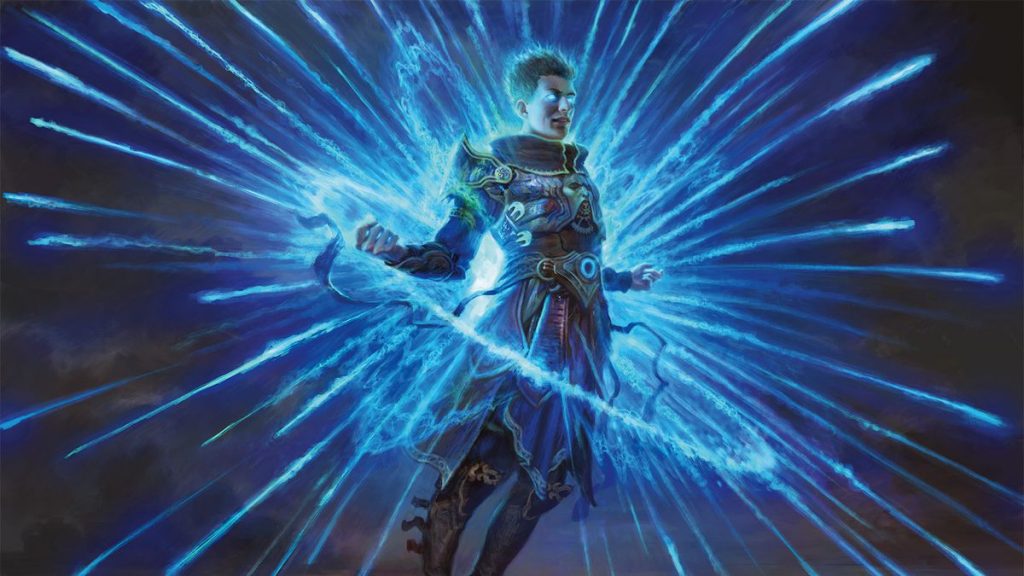
Counterspell | Illustration by Zack Stella
And that’s the end of this guide! I expect this set to be a somewhat rough experience, but I’d love to at least try drafting Izzet storm a couple of times.
What do you think of this Draft set? Have you had any good experiences with the 2-color archetypes? Let me know in the comments below or over on the Draftsim Twitter. And don’t forget to download Arena Tutor before you hop onto MTGA to play.
Until next time, may your Grapeshot always be lethal!
Follow Draftsim for awesome articles and set updates: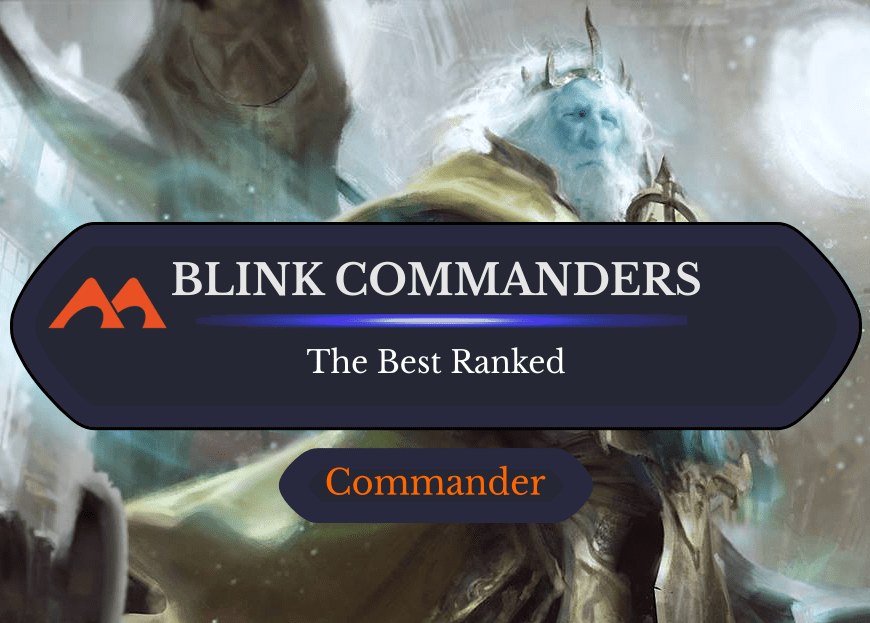
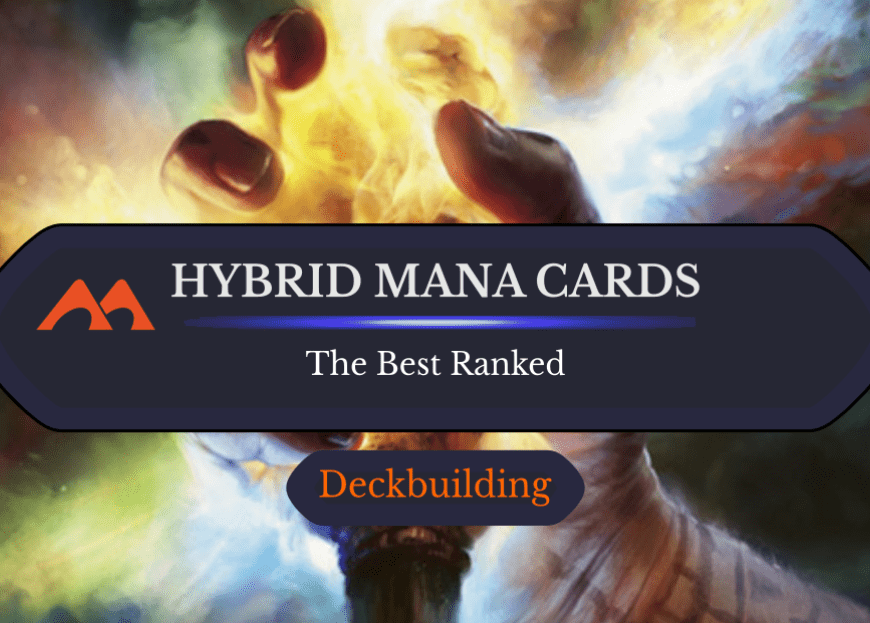
3 Comments
What do you think about picking Ornithopters to boost storm mechanic?
Wouldn’t recommend, the free creatures (Cloud of Faeries, Coal Stoaker, Peregrine Drake) are much better and I’d only want so much of that effect to begin with. Given that all three of those are commons it shouldn’t be hard to get a few copies for your deck.
Love the write-up! I haven’t played the format but I would be interested to know if Glory is still a totally absurd limited card. Magic has definitely sped up a lot since it’s printing in Judgement (where imo it was the best limited card) but it still seems like it would be totally sick if you can get it in your graveyard and the game stalls out.
Add Comment